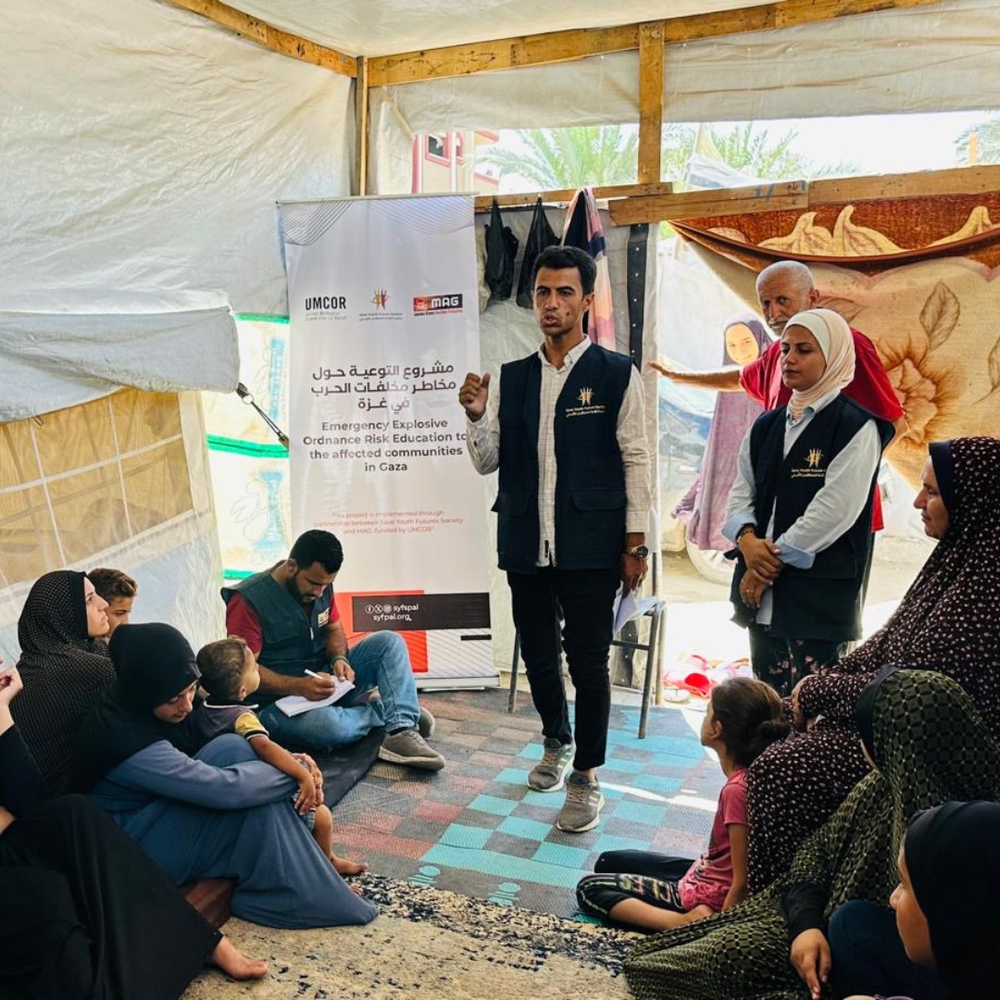Five risk education teams have begun delivery of life-saving messages to residents in Gaza thanks to a partnership between MAG and a local youth organisation.
The partnership has been launched as relentless bombardment from both air and land continues to devastate the territory, claiming lives, displacing thousands and destroying homes and critical infrastructure.
Today, around 90% of Gaza’s 2.1 million residents are displaced, and 60% of residential buildings are damaged. The ongoing conflict, insecurity, and the threat of unexploded bombs pose significant challenges for humanitarian access.
While the full extent of contamination is difficult to assess due to limited access, many of the hundreds of thousands of missiles, grenades, shells and mortars that have been fired into Gaza over the last 12 months may have failed to explode, leaving behind an immediate threat to life, and a long-term barrier to any hope of rebuilding.
That’s why, since the escalation in hostilities last year, MAG’s top priority has been practical action – focusing on what can be done to help keep people safe now, while preparing for a broader, coordinated mine action response to deal with unexploded ordnance when the situation allows.

MAG has now partnered with Save Youth Future Society (SYFS), a non-profit, independent youth organisation, with over four years of experience in delivering risk education in Gaza. Uniquely positioned to access affected communities and IDP camps, their strong connections with organisations providing essential humanitarian aid will ensure risk education reaches those who need it most.
In collaboration with SYFS and funded by the United Methodist Committee on Relief (UMCOR), MAG’s Explosive Ordnance Risk Education consultant has trained five teams, who have now begun delivering in-person risk education sessions to affected communities, with the aim of reaching 80,000 people in the next six months.
The sessions equip people with the tools and knowledge needed to recognise, avoid, and report possible hazards and respond safely to potentially dangerous situations.
MAG is also launching risk education training for humanitarian workers, supporting colleagues across the broader humanitarian response with critical advice to help keep them safe while delivering their activities.

With no formal clearance operations yet underway, risk education is the most urgent and vital intervention to protect civilians and humanitarian workers alike. These new activities will expand the scope and impact of MAG’s response.
Since 2022, MAG has been working with the United Nations Mine Action Service to disseminate risk education via social media. Since 7th October, we have developed a stream of digital content, addressing emerging threats, including white phosphorus munitions.
Between June and August alone, MAG's digital campaigns on Facebook and Instagram reached 870,000 people and generated over 700,000 engagements. These messages highlight the dangers of explosive remnants of war, identify hazardous areas, and promote safe behaviours that can reduce risk in an increasingly contaminated environment.
Today in Gaza, we remain committed to strengthening our response and will continue to do everything possible to limit casualties by providing critical safety information that can help save lives.
Support for this project was provided by a grant from UMCOR.





